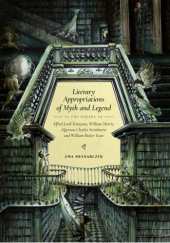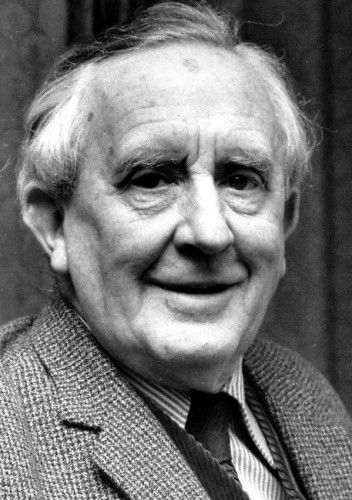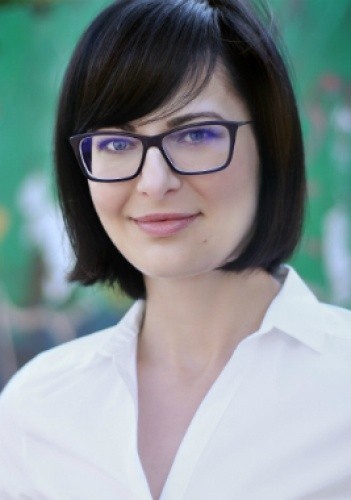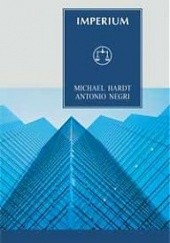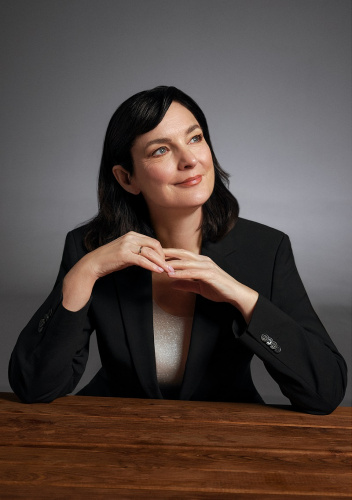Questers for inspiration, seekers of higher knowledge, dreamers versed in ancient lore, born out of their time, escaping from their world in...
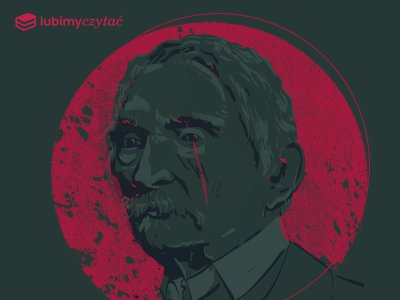 ArtykułyBieszczady i tropy. Niedźwiedzia? Nie – Aleksandra Fredry
ArtykułyBieszczady i tropy. Niedźwiedzia? Nie – Aleksandra Fredry Remigiusz Koziński3
Remigiusz Koziński3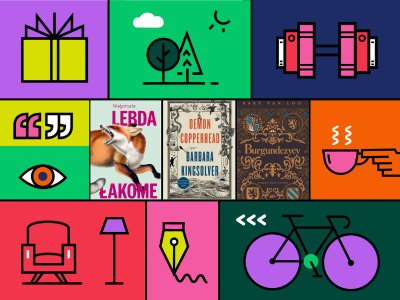 ArtykułyCzytamy w weekend. 26 kwietnia 2024
ArtykułyCzytamy w weekend. 26 kwietnia 2024 LubimyCzytać291
LubimyCzytać291 ArtykułySzpiegowskie intrygi najwyższej próby – wywiad z Robertem Michniewiczem, autorem „Doliny szpiegów”
ArtykułySzpiegowskie intrygi najwyższej próby – wywiad z Robertem Michniewiczem, autorem „Doliny szpiegów” Marcin Waincetel6
Marcin Waincetel6 ArtykułyWyślij recenzję i wygraj egzemplarz „Ciekawscy. Jurajska draka” Michała Łuczyńskiego
ArtykułyWyślij recenzję i wygraj egzemplarz „Ciekawscy. Jurajska draka” Michała Łuczyńskiego LubimyCzytać2
LubimyCzytać2
- Polecamy
Ewa Młynarczyk
 Źródło: fot. Zbigniew Młynarczyk110,0/10Pisze książki: językoznawstwo, nauka o literaturzeUrodzona: 17.07.1982Zmarła: 26.11.2022Ewa Młynarczyk (1982–2022) studiowała filologię angielską w Instytucie Anglistyki Uniwersytetu Warszawskiego. Po obronie pracy magisterskiej pt. Legenda arturiańska z perspektywy wiktoriańskiej w „Idyllach królewskich” Tennysona (2008),napisanej pod kierunkiem prof. Grażyny Bystydzieńskiej, kontynuowała — już jako doktorantka w Instytucie Anglistyki UW — badania nad literaturą XIX-wieczną. W latach 2010–2015 opublikowała osiem artykułów poświęconych poezji epoki wiktoriańskiej. Główny obszar Jej zainteresowań obejmował wiktoriańskie i współczesne teorie dotyczące interpretacji mitów oraz przekształceń motywów mitologicznych w postromantycznej i wiktoriańskiej poezji brytyjskiej. W okresie studiów doktoranckich pracowała jako lektorka języka angielskiego na Uniwersytecie Warszawskim. Książka "Literary Appropriations of Myth and Legend in the Poetry of Alfred Lord Tennyson, William Morris, Algernon Charles Swinburne and William Butler Yeats" została przygotowana do druku na podstawie rozprawy doktorskiej Ewy. Praca, napisana pod kierunkiem prof. G. Bystydzieńskiej, uzyskała pozytywne recenzje na krótko przed śmiercią Autorki. Nagła choroba uniemożliwiła Jej przystąpienie do egzaminów końcowych.https://ewamlynarczyk.pl10,0/10średnia ocena książek autora3 przeczytało książki autora0 chce przeczytać książki autoraDyskutuj o autorze3fanów autoraZostań fanem autora
Źródło: fot. Zbigniew Młynarczyk110,0/10Pisze książki: językoznawstwo, nauka o literaturzeUrodzona: 17.07.1982Zmarła: 26.11.2022Ewa Młynarczyk (1982–2022) studiowała filologię angielską w Instytucie Anglistyki Uniwersytetu Warszawskiego. Po obronie pracy magisterskiej pt. Legenda arturiańska z perspektywy wiktoriańskiej w „Idyllach królewskich” Tennysona (2008),napisanej pod kierunkiem prof. Grażyny Bystydzieńskiej, kontynuowała — już jako doktorantka w Instytucie Anglistyki UW — badania nad literaturą XIX-wieczną. W latach 2010–2015 opublikowała osiem artykułów poświęconych poezji epoki wiktoriańskiej. Główny obszar Jej zainteresowań obejmował wiktoriańskie i współczesne teorie dotyczące interpretacji mitów oraz przekształceń motywów mitologicznych w postromantycznej i wiktoriańskiej poezji brytyjskiej. W okresie studiów doktoranckich pracowała jako lektorka języka angielskiego na Uniwersytecie Warszawskim. Książka "Literary Appropriations of Myth and Legend in the Poetry of Alfred Lord Tennyson, William Morris, Algernon Charles Swinburne and William Butler Yeats" została przygotowana do druku na podstawie rozprawy doktorskiej Ewy. Praca, napisana pod kierunkiem prof. G. Bystydzieńskiej, uzyskała pozytywne recenzje na krótko przed śmiercią Autorki. Nagła choroba uniemożliwiła Jej przystąpienie do egzaminów końcowych.https://ewamlynarczyk.pl10,0/10średnia ocena książek autora3 przeczytało książki autora0 chce przeczytać książki autoraDyskutuj o autorze3fanów autoraZostań fanem autoraKsiążki i czasopisma
- Wszystkie
- Książki
- Czasopisma
Literary Appropriations of Myth and Legend in the Poetry of Alfred Lord Tennyson, William Morris, Algernon Charles Swinburne and William Butler YeatsEwa Młynarczyk10,0 z 3 ocen3 czytelników 3 opinie2024Popularne cytaty autora
Zobacz więcej cytatówCytat dniaEwa Młynarczyk, Literary Appropriations of Myth and Legend in the Poetry of Alfred Lord Tennyson, William Morris, Algernon Charles Swinburne and William Butler YeatsIn the nineteenth century, myth was no longer discarded as mere fable, nor was it interpreted as history in a supernatural disguise. The com...
In the nineteenth century, myth was no longer discarded as mere fable, nor was it interpreted as history in a supernatural disguise. The comparative method helped to illuminate the similarities between beliefs of disparate cultures, and established the study of mythology as a respected field of scholarly research, in that myths were no longer treated as corruptions of the sacred revelation embodied in the Bible. The emerging discipline, anthropology, allowed greater insight into the mythopoeic mind, which the Romantic poets had discovered and celebrated among the country folk. Thus, the above-mentioned theories should not be viewed separately from literary studies. While classicists and philologists attempted to arrive at theories explaining the original significance of the major figures in world mythologies, the Victorian poets found in them new sources of inspiration for their dramatic personas. Moreover, this renewed interest in ancient mythologies also helped to awaken the public’s interest in the mythologies and folklore native to the British Isles, embracing both the Celtic and Norse connections, which also provided sources for new directions in literature.
Ewa Młynarczyk , Literary Appropriations of Myth and Legend in the Poetry of Alfred Lord Tennyson, William Morris, Algernon Charles Swinburne and William Butler Yeats1 osoba to lubiIn Celtic legends, the Irish monk Saint Brendan of Clonfert, and the Irish heroes Oisín, Bran and Mael Duin all travel to the Irish Fortunat...
In Celtic legends, the Irish monk Saint Brendan of Clonfert, and the Irish heroes Oisín, Bran and Mael Duin all travel to the Irish Fortunate Islands, which appear under various names, such as Tír na mBan (the Land of Women),Tír na nÓg (the Land of Youth),Tír na mBeo (the Land of the Living) and Tír Tairngire (the Land of Promise). These Celtic Islands of the Blessed were believed to be “settled by the semi-divine Tuatha Dé Danann, after their defeat by the mortal Milesians” and, like their Greek counterparts, were situated in the western ocean. This was also the traditional location of the Celtic Elysium, Avalon, the Island of Apples, where both the wounded King Arthur and Ogier the Dane were carried by Morgan le Fay after their final battles. However, according to another popular belief, Avalon was identified with Glastonbury. This concept of the Otherworld as situated in a different dimension yet sharing the same geographical location with a place in the world of mortals has been common in Irish folklore, where the Fairyland can be found under the fairy mounds (sídhe),in caves, ruined castles, raths or at the bottom of the lakes.
Ewa Młynarczyk , Literary Appropriations of Myth and Legend in the Poetry of Alfred Lord Tennyson, William Morris, Algernon Charles Swinburne and William Butler Yeats1 osoba to lubi
Najnowsze opinie o książkach autora
Literary Appropriations of Myth and Legend in the Poetry of Alfred Lord Tennyson, William Morris, Algernon Charles Swinburne and William Butler Yeats Ewa Młynarczyk10,0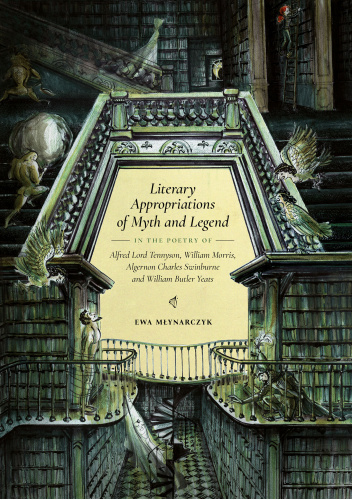 Zwykle czytam prace doktorskie osób, które z dumą mogą zaprezentować swój dorobek, pochwalić się recenzjami prac, wyjazdami, konferencjami, kolejnymi projektami. Wchodząc do Książki Ewy Młynarczyk wypisywałam kolejne rzeczy do pochwalenia, kolejne tematy, które mogłabym poruszyć z autorką, bo jest to praca fantastycznie napisana. Marzyło mi się nawet połączenie sił, ale okazało się, że to niemożliwe, bo autorka z powodu nagłej choroby zmarła nim wydano książkę, która jest tu pewnego rodzaju upamiętnieniem działalności naukowej Ewy Młynarczyk. Czy zatem ma sens pisania o niej? Oczywiście, że tak, bo to praca interesująca i ważna, dlatego mam nadzieję, że ukaże się też w języku polskim. Autorka rozprawy doktorskiej napisała wiele artykułów naukowych, które możecie znaleźć na stronie Artykuły - Ewa Młynarczyk in memoriam (ewamlynarczyk.pl). Jej zainteresowania krążą wokół mitu, różnego rodzaju archetypów w literaturze z naciskiem na dzieła Alfreda Lorda Tennysona, Williama Morrisa, Algernona Charlesa Swinburne’a i Williama Butlera Yeatsa. Pojawiają się tu takie motywy jak legendy arturiańskie, upiorne ogrody, motyw miłości do dziewicy, wizje zaświatów, zawłaszczania i wzajemnego inspirowania się twórców. W jej pracach nie zabraknie tematyki społecznej, czyli przyglądania się formy rządów Camelotu. Autorka skłania nas do zadawania sobie pytania o to, co wiemy wiktoriańskich mitach i legendach, co one mówią o ówczesnym świecie i jakie wizje przeszłości kreują, w jaki sposób ich wizerunek ewoluował. Napisana w języku angielskim praca wprowadza nas do świata wiktoriańskich i współczesnych teorii interpretacji mitów oraz legend, przekształcania motywów w wiktoriańskiej poezji brytyjskiej. Książka "Literary Appropriations of Myth and Legend in the Poetry of Alfred Lord Tennyson, William Morris, Algernon Charles Swinburne and William Butler Yeats" została przygotowana do druku na podstawie rozprawy doktorskiej Ewy Młynarczyk. Praca, napisana pod kierunkiem prof. G. Bystydzieńskiej, uzyskała pozytywne recenzje na krótko przed śmiercią Autorki. W czasie lektury widzimy niesamowitą dbałość oraz otwartość autorki, a także jej rozległą i dogłębną wiedzę i umiejętność szerszego spojrzenia na wiele zagadnień. Książka literaturoznawcza jest interesującą podróżą przez znane motywy, pokazywania, w jaki sposób były przekształcane, jak funkcjonowały. Autorka wskazuje źródła inspiracji twórców, klimatu tworzenia oraz funkcjonowania różnorodnych archetypów w kulturze. Tytułowe literackie reinterpretacje mitów w prezentowanej poezji twórców epoki wiktoriańskiej skupiają się na kluczowych motywach, których korzenie sięgają starożytności greckiej, rzymskiej, a także celtyckich i nordyckich, przez co widzimy jak różne kręgi kulturowe prowadzą do powstania ciekawych obrazów, pozwalają na snucie opowieści o sprawach ważnych dla każdego człowieka. Powracają tu motywy towarzyszące ludzkości od początków istnienia kultury: motyw wędrówki, zmagania się ze słabościami, zaświatów i wykluczenia ze społeczeństwa. Pokazuje, w jaki sposób te źródła się dopełniały i ulegały przekształceniom. Książkę polecam osobom czytającym po angielsku, zainteresowanych literaturą, motywami w niej funkcjonującymi, mitami, legendami, różnorodnymi wzorcami i ich przekształceniami w czasie. Całość napisana bardzo przystępnie i dopracowana. Wersja elektroniczna książki dostępna jest za darmo na stronie ewamlynarczyk.pl/ksiazka. Publikację można też kupić pięknie wydaną wersję papierową na aukcji charytatywnej Ewa Młynarczyk - Literary Appropriations of Myth and Legend in the Poetry 15057928570 - Charytatywni AllegroLiterary Appropriations of Myth and Legend in the Poetry of Alfred Lord Tennyson, William Morris, Algernon Charles Swinburne and William Butler Yeats Ewa Młynarczyk10,0
Zwykle czytam prace doktorskie osób, które z dumą mogą zaprezentować swój dorobek, pochwalić się recenzjami prac, wyjazdami, konferencjami, kolejnymi projektami. Wchodząc do Książki Ewy Młynarczyk wypisywałam kolejne rzeczy do pochwalenia, kolejne tematy, które mogłabym poruszyć z autorką, bo jest to praca fantastycznie napisana. Marzyło mi się nawet połączenie sił, ale okazało się, że to niemożliwe, bo autorka z powodu nagłej choroby zmarła nim wydano książkę, która jest tu pewnego rodzaju upamiętnieniem działalności naukowej Ewy Młynarczyk. Czy zatem ma sens pisania o niej? Oczywiście, że tak, bo to praca interesująca i ważna, dlatego mam nadzieję, że ukaże się też w języku polskim. Autorka rozprawy doktorskiej napisała wiele artykułów naukowych, które możecie znaleźć na stronie Artykuły - Ewa Młynarczyk in memoriam (ewamlynarczyk.pl). Jej zainteresowania krążą wokół mitu, różnego rodzaju archetypów w literaturze z naciskiem na dzieła Alfreda Lorda Tennysona, Williama Morrisa, Algernona Charlesa Swinburne’a i Williama Butlera Yeatsa. Pojawiają się tu takie motywy jak legendy arturiańskie, upiorne ogrody, motyw miłości do dziewicy, wizje zaświatów, zawłaszczania i wzajemnego inspirowania się twórców. W jej pracach nie zabraknie tematyki społecznej, czyli przyglądania się formy rządów Camelotu. Autorka skłania nas do zadawania sobie pytania o to, co wiemy wiktoriańskich mitach i legendach, co one mówią o ówczesnym świecie i jakie wizje przeszłości kreują, w jaki sposób ich wizerunek ewoluował. Napisana w języku angielskim praca wprowadza nas do świata wiktoriańskich i współczesnych teorii interpretacji mitów oraz legend, przekształcania motywów w wiktoriańskiej poezji brytyjskiej. Książka "Literary Appropriations of Myth and Legend in the Poetry of Alfred Lord Tennyson, William Morris, Algernon Charles Swinburne and William Butler Yeats" została przygotowana do druku na podstawie rozprawy doktorskiej Ewy Młynarczyk. Praca, napisana pod kierunkiem prof. G. Bystydzieńskiej, uzyskała pozytywne recenzje na krótko przed śmiercią Autorki. W czasie lektury widzimy niesamowitą dbałość oraz otwartość autorki, a także jej rozległą i dogłębną wiedzę i umiejętność szerszego spojrzenia na wiele zagadnień. Książka literaturoznawcza jest interesującą podróżą przez znane motywy, pokazywania, w jaki sposób były przekształcane, jak funkcjonowały. Autorka wskazuje źródła inspiracji twórców, klimatu tworzenia oraz funkcjonowania różnorodnych archetypów w kulturze. Tytułowe literackie reinterpretacje mitów w prezentowanej poezji twórców epoki wiktoriańskiej skupiają się na kluczowych motywach, których korzenie sięgają starożytności greckiej, rzymskiej, a także celtyckich i nordyckich, przez co widzimy jak różne kręgi kulturowe prowadzą do powstania ciekawych obrazów, pozwalają na snucie opowieści o sprawach ważnych dla każdego człowieka. Powracają tu motywy towarzyszące ludzkości od początków istnienia kultury: motyw wędrówki, zmagania się ze słabościami, zaświatów i wykluczenia ze społeczeństwa. Pokazuje, w jaki sposób te źródła się dopełniały i ulegały przekształceniom. Książkę polecam osobom czytającym po angielsku, zainteresowanych literaturą, motywami w niej funkcjonującymi, mitami, legendami, różnorodnymi wzorcami i ich przekształceniami w czasie. Całość napisana bardzo przystępnie i dopracowana. Wersja elektroniczna książki dostępna jest za darmo na stronie ewamlynarczyk.pl/ksiazka. Publikację można też kupić pięknie wydaną wersję papierową na aukcji charytatywnej Ewa Młynarczyk - Literary Appropriations of Myth and Legend in the Poetry 15057928570 - Charytatywni AllegroLiterary Appropriations of Myth and Legend in the Poetry of Alfred Lord Tennyson, William Morris, Algernon Charles Swinburne and William Butler Yeats Ewa Młynarczyk10,0 Dawno nie miałem w ręce tak dobrze napisanej książki literaturoznawczej – chciałoby się powiedzieć, że dotycząc poezji, sama jest poetycka, ale to określenie dotyczyłoby raczej czegoś w rodzaju „ojczyzny ducha” Autorki, który przejawia się subtelnie w przemyślanym metrum, w którym prowadzi czytelnika przez opisywane zagadnienie. Praca Ewy jest bowiem analizą przedstawioną klarownie i precyzyjnie, dobrze umocowaną metodologicznie, a w podejściu do tematu wnikliwą i szeroką. Tytułowe literackie reintepretacje mitów w poezji poetów epoki wiktoriańskiej, które przedstawia na kanwie trzech kluczowych motywów, mają swoje korzenie w starożytnych ziemiach i akwenach greckich, rzymskich, celtyckich i nordyckich. Z oryginalnego ujęcia uniwersalnego tematu dobrze w takim przyjaznym wydaniu zaczerpnąć, warto polecić i miło posiadać we własnej biblioteczce, bo przyjemności z tej wciągającej lektury dostarcza też staranne edytorsko i graficznie wydanie papierowe.
Dawno nie miałem w ręce tak dobrze napisanej książki literaturoznawczej – chciałoby się powiedzieć, że dotycząc poezji, sama jest poetycka, ale to określenie dotyczyłoby raczej czegoś w rodzaju „ojczyzny ducha” Autorki, który przejawia się subtelnie w przemyślanym metrum, w którym prowadzi czytelnika przez opisywane zagadnienie. Praca Ewy jest bowiem analizą przedstawioną klarownie i precyzyjnie, dobrze umocowaną metodologicznie, a w podejściu do tematu wnikliwą i szeroką. Tytułowe literackie reintepretacje mitów w poezji poetów epoki wiktoriańskiej, które przedstawia na kanwie trzech kluczowych motywów, mają swoje korzenie w starożytnych ziemiach i akwenach greckich, rzymskich, celtyckich i nordyckich. Z oryginalnego ujęcia uniwersalnego tematu dobrze w takim przyjaznym wydaniu zaczerpnąć, warto polecić i miło posiadać we własnej biblioteczce, bo przyjemności z tej wciągającej lektury dostarcza też staranne edytorsko i graficznie wydanie papierowe.Autorzy piszący podobnie
Popularne w kategorii książek autora
Popularni autorzy


















